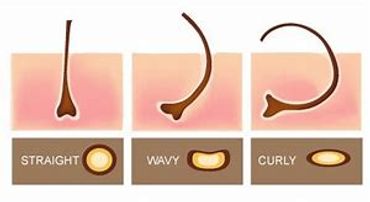History
Electrology originated in 1875 when ophthalmologist Dr. Charles Michel successfully accomplished permanent removal of inverted eyelashes by applying electric current to render the follicle incapable of reproducing hair. He shared his discovery with a colleague specializing in dermatology, William Hardaway MD. who expanded application for the procedure.
Through advancements and refinements in equipment and technique electrology has become an available and affordable option for those seeking a practical solution for unwanted hair anywhere on the body!
Techniques
Presently the term "electrolysis" refers to three separate modalities commonly recognized as effecting permanent hair removal. These methods include "galvanic", "thermolysis", and "the blend", and each involves the insertion of a fine probe conductor into the hair follicle (a natural skin opening), brief application of current and epilation (removal) of the treated hair.
The galvanic current (DC) causes a chemical change in the tissue, thermolysis (AC) causes heat resulting from friction, and the blend combines the two currents and their effects on the tissue. Each technique has specific application and the professional electrologist determines which modality is needed for each individual.
I use the Blend Method which is taught in all accredited schools. The blend is the most effective in permanent removal of the hair. Thermolysis (heat) used alone only treats the tissue surrounding the probe, so if you have a deep or curly/distorted follicle it simply cannot treat it permanently unless the heat is set VERY high and this results in scaring of the surface skin after time. The Blend uses Electrology (Lye) which is a chemical created by the body and can travel down any deep, curly/distored hair without any damage to the surface skin. The Thermolysis(heat) comes into play by using low levels of heat to help heat up the Lye so that it will travel down the follicle to the root much quicker. The heat also then treats the surrounding tissue or lower 2/3 of the follicle at a safe level and will not cause scaring over time.
**In my practice I use appropriate PPE, disposable probes, an ultrasonic cleaner and autoclave for my tweezers and a hospital grade quaternary cleaner between each client.
Procedures
The client's role in the treatment process is very important to the overall result. Expressing concerns or questions will assist the electrologist in providing optimal service. Consistency in maintaining a prescribed course of treatment scheduling will significantly influence progress. As treatment progresses and hair growth decreases sessions become less frequent and shorter in duration.
Temporary removal methods (i.e. tweezing, or waxing) which could prolong and complicate the process should be discontinued. By using these methods it triggers more blood flow to the follicle which intern causes the hair to come back more course and harder to treat permanently. It will also cause hyper pigmentation (darkening) of the skin. Clipping bothersome hair near the skin surface helps conceal emerging growth without interfering with treatment.
Specific aftercare procedures based on individual cases may be recommended to facilitate the natural healing process. Aftercare may involve normal cleansing application of antiseptic, avoiding excessive exposure to UV rays and refraining from scratching or irritating the treated area.
Concerns regarding sensation and skin reaction need not be a deterrent to those considering treatment. When performed by a skilled electrologist, the treatment is generally easily tolerated and if a skin reaction occurs it is minimal and temporary. As mentioned earlier, if you notice tiny scabs appearing or bruising these are signs that the procedure is being done incorrectly. However, sensitivities may vary among individuals and according to many factors including internal and external influences.
Factors
Hair growth results primarily from heredity and or systemic influences (i.e. hormone levels, receptor cell sensitivity, medications and stress). Effective treatment involves destruction of stem cells (future hairs) and the matrix with the dermal papilla (source of cell nourishment), eliminating the treated follicle's ability to produce hair. The structure of the hair follicle and complicating factors such as the "hair growth cycle" (each follicle produces hair independently at a varying rate) and "distorted " hair follicles are represented in the illustration. (SEE IMAGES BELOW) The growth cycle is a primary factor as a follicle must be producing a hair (with the shaft above the skin surface and actively growing) to be treated. Distorted follicles present a challenge as do curly or wavy hair because the follicle is curved and the probe cannot be inserted to the depth needed so it may take a few more treatments than straight hair. During initial consultation and throughout the treatment the electrologist will discuss the role these factors play in the progress. Estimates regarding overall length of treatment may be given in generalities as each individual circumstances will vary according to these many factors. Understanding the nature of hair growth will enable the client to have reasonable expectations and assist the client in making the commitment necessary to achieve the desired results.
Below shows different stages growth cycle


Conclusion
"Permanent" should not be confused with "immediate" where hair removal is concerned. To permanently eliminate presently active hair follicles within a specific area requires a series of treatments over a period of time. Presently inactive follicles represent a potential for new growth which may need periodic maintenance appointments for some individuals.
For further information or to schedule a consultation or appointment please call or email us. We are happy to help.
Copyright © 2018 Monroe Electrology - All Rights Reserved.
Powered by GoDaddy